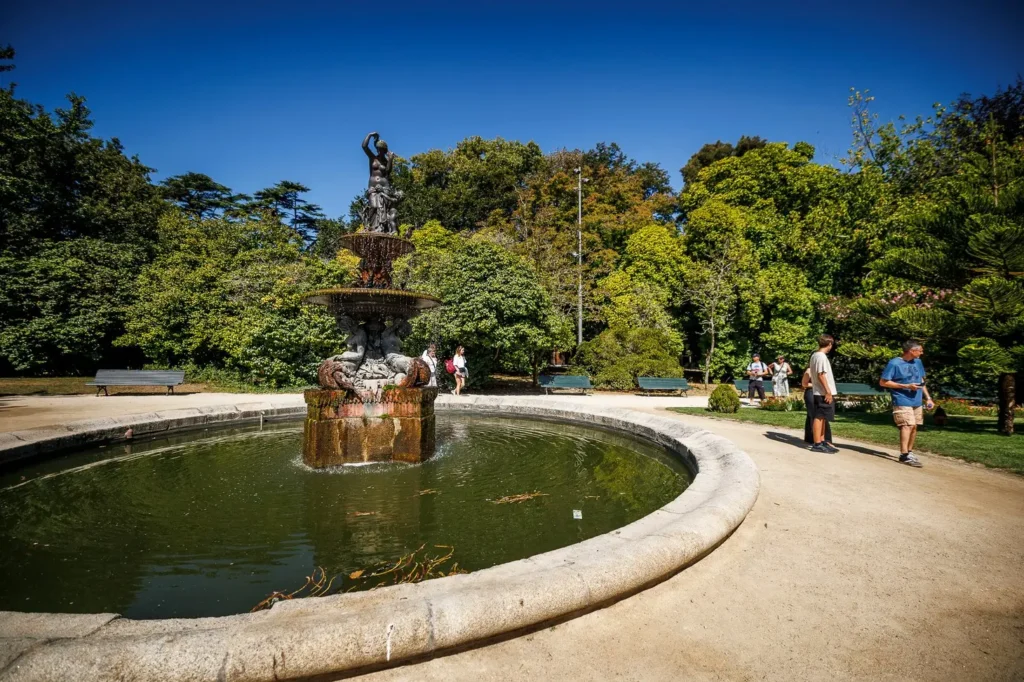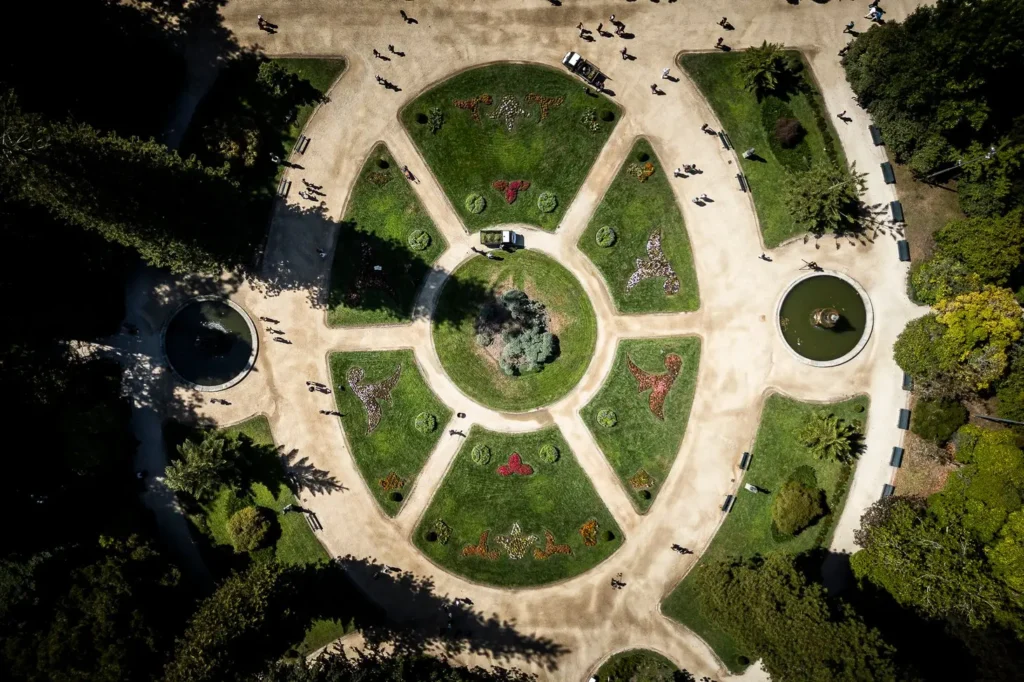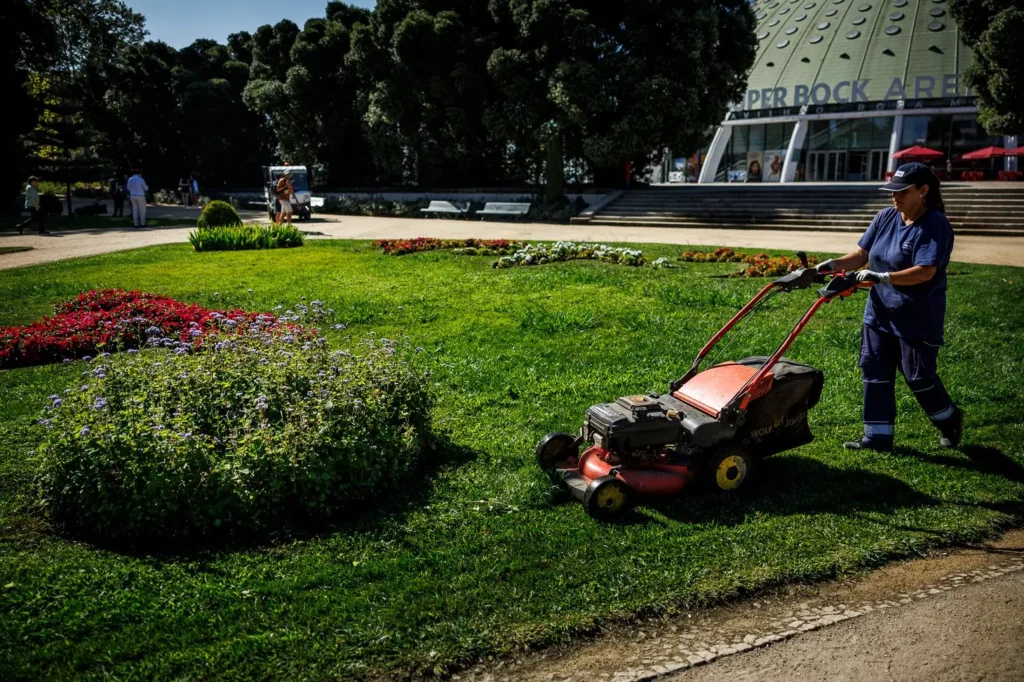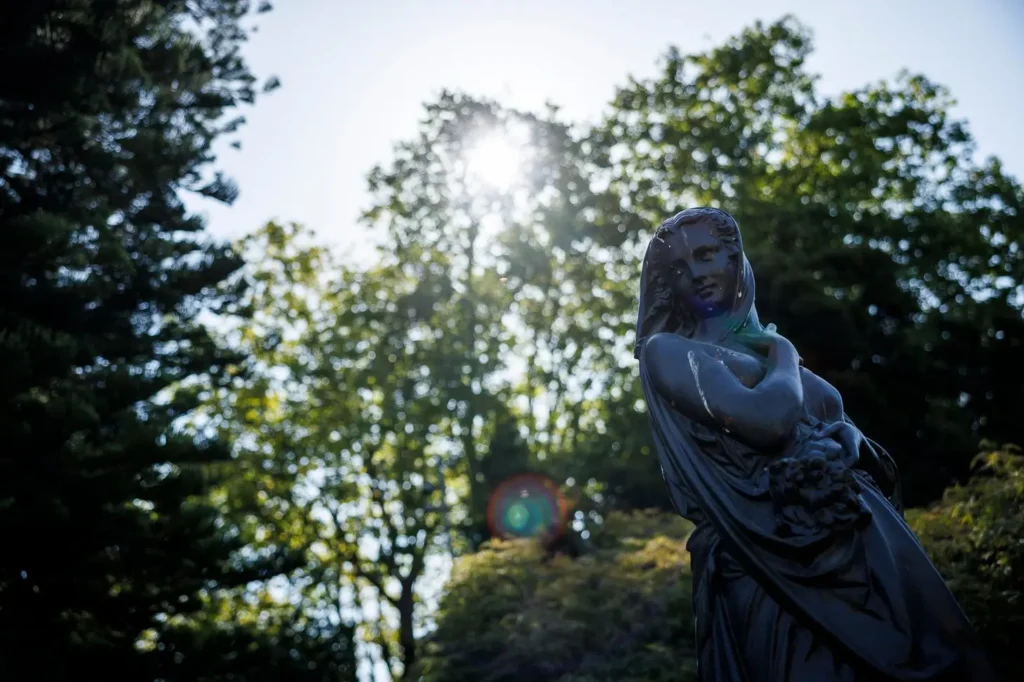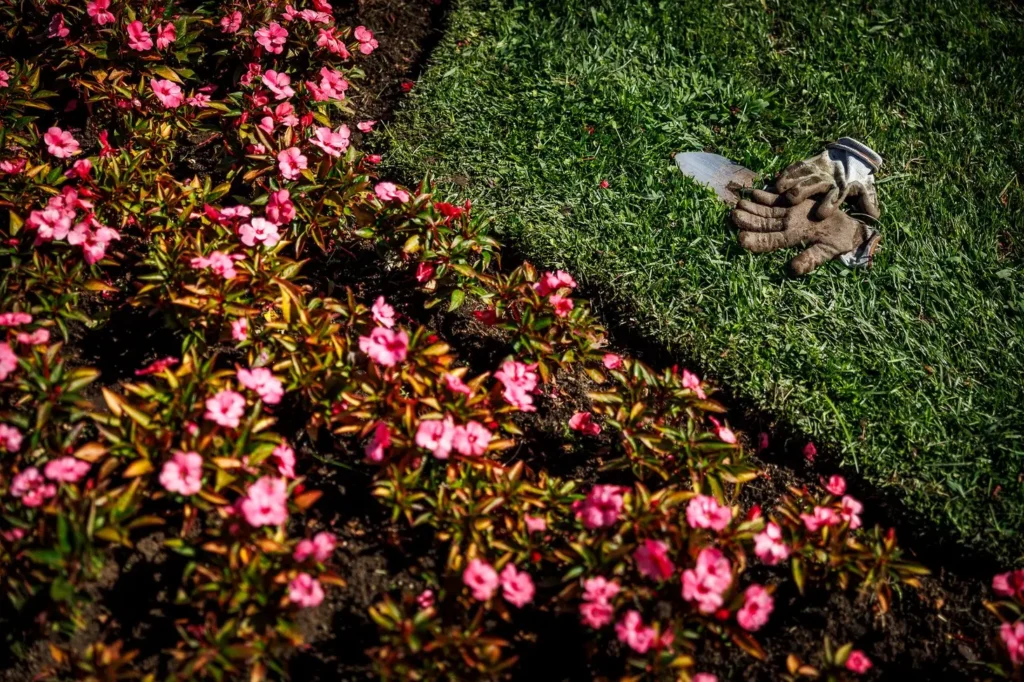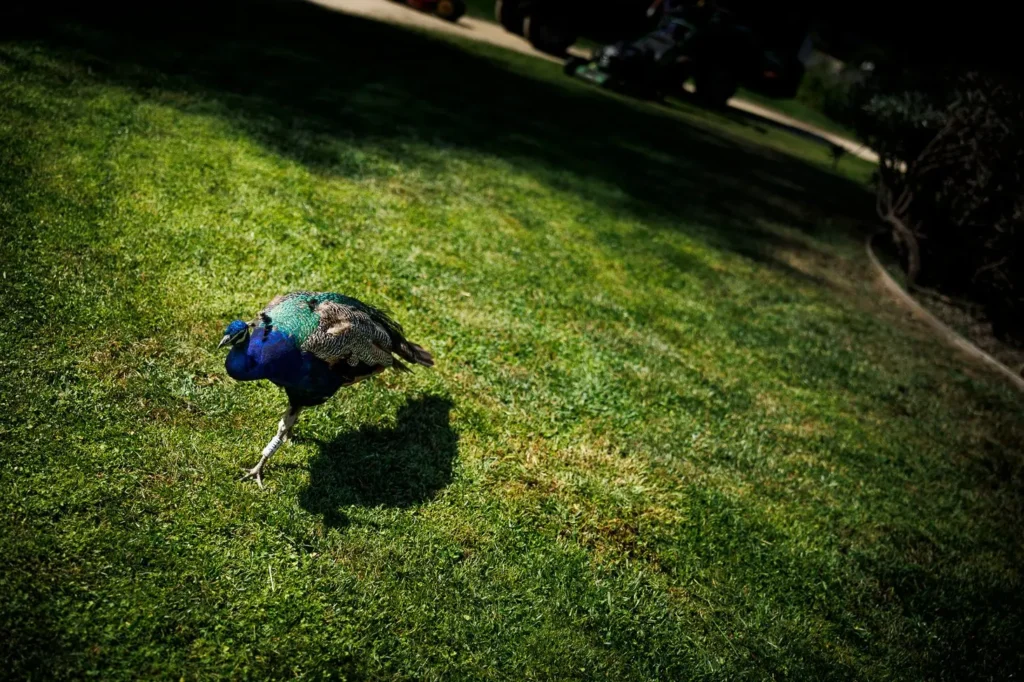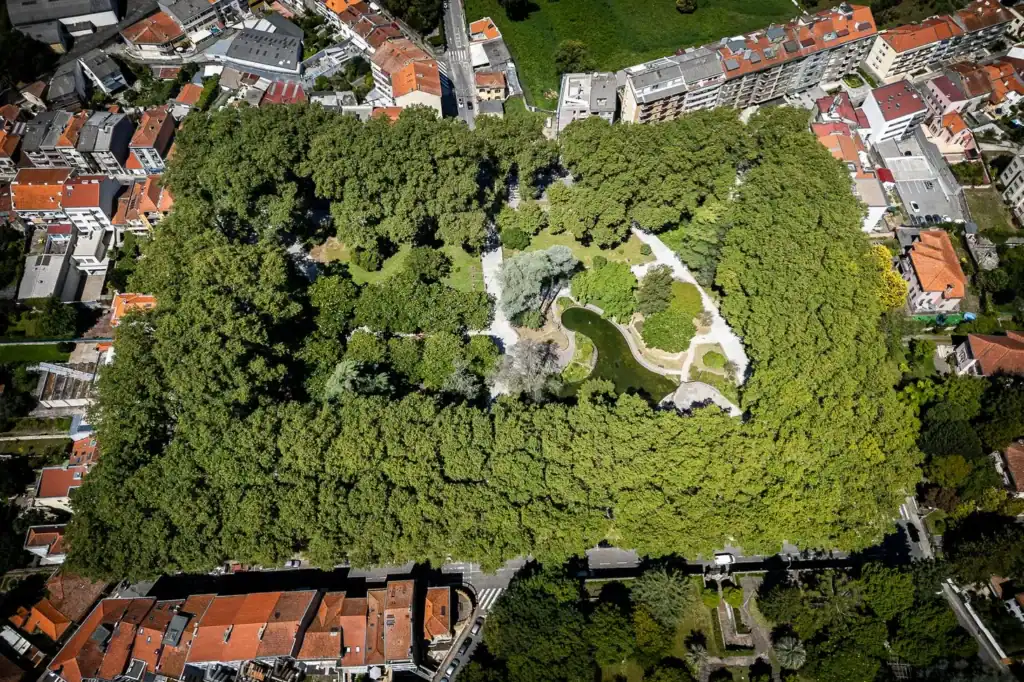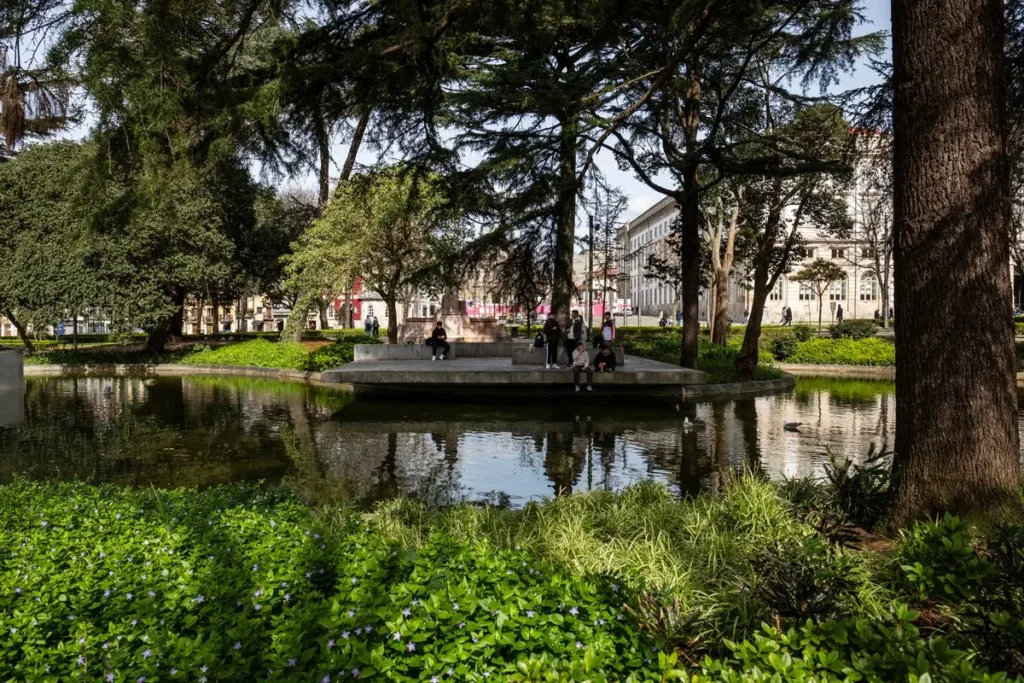The Palácio de Cristal Gardens are a prime example of nature-based solutions, integrating green infrastructure with multiple ecological and social functions in a densely urban area.
Their diverse vegetation, consisting of around 1.340 trees, contributes to temperature regulation and improved air quality, while the topography and natural drainage systems promote sustainable rainwater management, reducing the risk of urban flooding. Among these more than a thousand trees, the following stand out: Acer (Acer negundo), the Lime Tree (Cordata, Platyphyllos, and Tomentosa), Camellias, the Metrosidero (Metrosidero excelsa), the Palm Tree (Washingtonia Robusta), the Araucaria (Araucaria Heterophyilla), Plane trees (Platano acerifolia), and two trees classified as being of public interest—the Virginia tulip tree (Liriodendron tulipifera) and the evergreen magnolia (Magnolia grandiflora).
The mosaic of habitats that make up the Palácio de Cristal, ranging from lawns to woods and formal gardens, supports urban biodiversity and the use of various spaces for different recreational and leisure purposes. In addition, these gardens are located near a central hospital in the city, making them very important as a buffer zone for air quality, reducing urban noise, and providing a natural, green space for patients, healthcare professionals, and visitors to enjoy.
The fauna biodiversity is very diverse, with two species of reptiles, at least one species of bat, 62 species of insects, 22 species of fungi, and about 85 species of birds observed so far. The latter makes this location essential for the Anilhagem Científica de Aves project, which aims to understand the importance of certain areas of the city for different species. So far, it has been possible to band 19 individuals of 10 different species in the Palácio de Cristal Gardens.
Also noteworthy is the presence of three species of amphibians – green frog (Pelophylax perezi), iberian newt (Lissotriton boscai), and common midwife toad (Alytes obstreticans) – which were introduced into the gardens’ lakes and ponds thanks to the restoration of the water bodies carried out by the municipality in partnership with CIIMAR (Interdisciplinary Centre of Marine and Environmental Research). During this restoration, emergent aquatic plant species (such as Iris pseudacorus, Lysimachia vulgaris, Lythrum salicaria), floating plants (such as Nymphoides peltata and Potamogeton crispus) and plants from runoff areas (such as Marsilea batardea, Carex pendula, and Wahlenbergia hederacea) were also planted.
